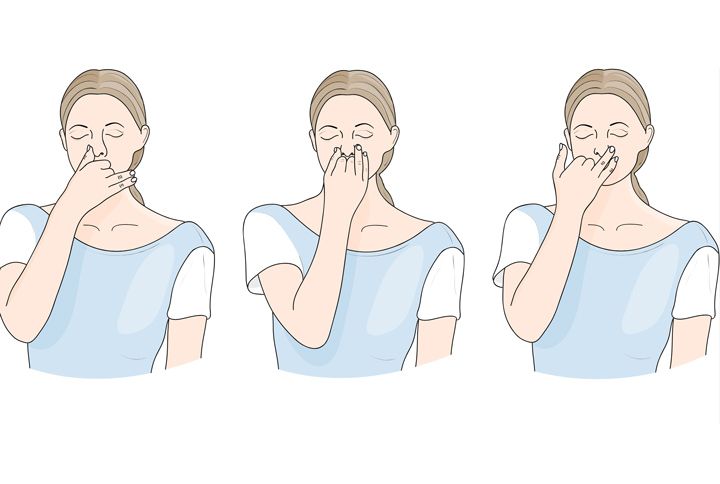
It’s the most important aspect of our lives. It’s something without which we would be non-existent. And it’s responsible to either make or break our overall health. And after reading the title, its crystal clear what we’re here to discuss—breathing. If it’s something you do, on an average, 20,000 times a day, then it’s a no-brainer that you need to do it correctly to avail its numerous benefits. And have a good understanding of the various techniques to practice for holistic health. Modern times have paved the way for excessive stress from uncountable ends and often, we forget to put ourselves and our health before anything else. The fact of the matter is that present times have merged the boundaries between professional lives and personal lives, which ultimately leads to decreasing levels of attention and focus on our health. Especially breathing.
Something that we do unconsciously and subconsciously is often not carried out in the right manner and for that, it is our responsibility to incorporate the right methods into our lives on a daily basis simply to boost our health. For the same, we spoke to Yoga expert—Sharanya Narayan—who has been practising Yoga for quite some time and was gracious enough to list down a bunch of super-easy and beneficial breathing techniques along with the right way to practice them to include in your routine. Keep scrolling to learn more.
Ahead, we give you 7 pranayamas that are guaranteed to improve the quality of your health:
1. Diaphragmatic Breathing
This technique involves engaging the diaphragm so as to yield a good exchange of oxygen entering the body and carbon dioxide exiting it. This ability to breathe in a more wholesome manner allows us to calm the heart and regulate blood pressure. When you take a breath in, it causes the diaphragm to contract and shift downwards, which allows your lungs to push the abdominal muscles outwards, that results in the expansion of your belly. On your breath out, the lungs and the rib cage start to collapse inwards, causing the air to ‘be exhaled’ and the belly relaxed. This is due to the diaphragm shifting back to the position as it relaxes.
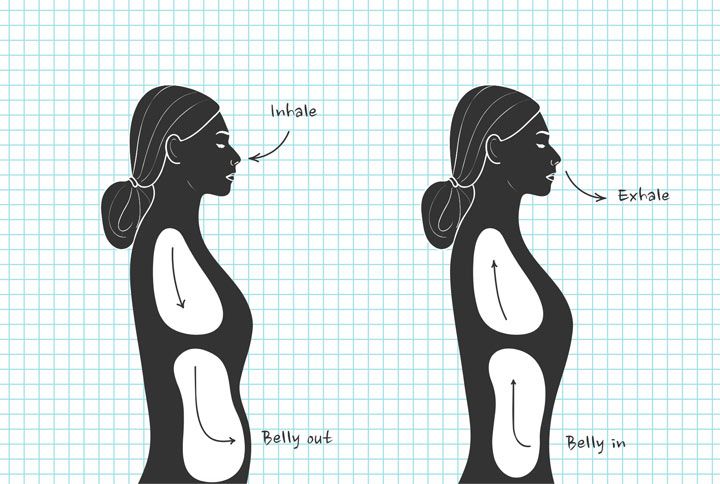
2. Kapalbhati
Kapalabhati is a purification technique, designed to internally cleanse the respiratory system. It helps improve digestion, keeps you away from gastric problems and tones the abdominal muscles. The right way to practice it by slow and easy inhalation followed by a sharp and quick exhalation. It’s best to do this exercise in sets leaving gaps for breaks. Mornings are an ideal time to practice Kapalbhati as it is during our sleep that some old air remains in the crevices of our lungs, which is unhealthy and could later cause various respiratory diseases. As you inhale, the lungs fill with oxygen and the sharp exhalation forces all of the air out.
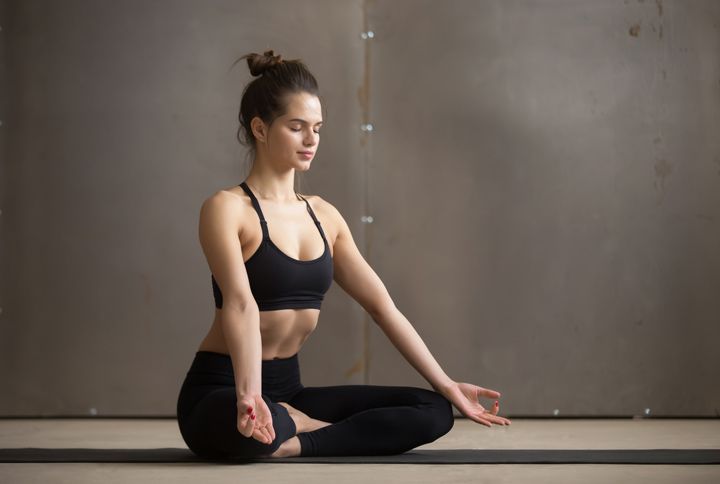
3. Nadi Shodhana or Alternate Nostril Breathing
Nadi Shodhana is a calming pranayama which brings in an increased supply of blood to the heart, helps to fine-tune our breath and therefore makes it more complete, while bringing one in touch with the rather subtler energies of the body. When practising Nadi Shodhana, try and place your right thumb and the ring finger just under the bridge of your nose. This will allow you to block one nostril while inhaling from the other. At the time of exhalation, block the other nostril with your ring finger and exhale from the nostril you first blocked. This will allow you to focus better, both physically and mentally during the exercise.
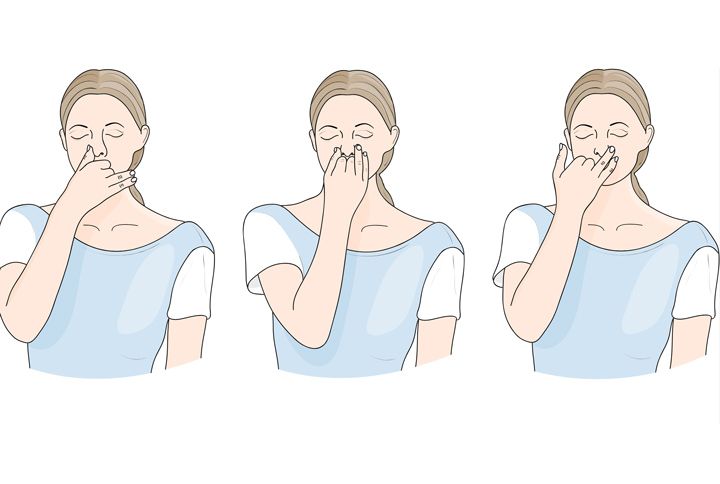
4. Belly Breathing
This style of breathing allows one to start accessing healthy breathing patterns and must be practised before moving into more specific pranayamas. It helps in massaging the abdominal organs, creates a healthy environment in the stomach and helps to combat feelings of anxiety. Simply close your eyes and keep the focus on your belly during the process. As you inhale, your belly should stay loose and expand. As you exhale, follow the natural feeling of contraction. However, do not try to breathe in too hard as that would be a counter move to your intention of relaxation.
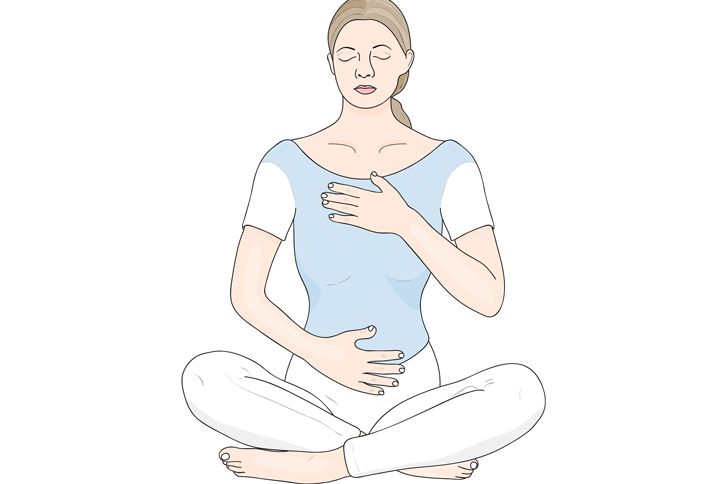
5. 1:4:2 Pranayama
1:4:2 pranayama essentially aids us to develop control over our daily breathing patterns. It also helps to calm the mind while eliminating various toxins from crevices in the body. This technique has 3 stages to it and is divided on the number of seconds involved at each stage.
- Puraka: Inhalation
- Antar Kumbhaka: Retention
- Rechaka: Exhalation
It is important to note that as a beginner, it is advisable to avoid the ‘Kumbhaka’ stage of this practice as it must only be introduced under the supervision of an experienced Pranayama teacher. Hence, for now, we shall look at the 1:2 aspects of the practice. Here, if the inhalation lasts for 4 seconds then the exhalation must last for 8 seconds. This is the relationship between breathing in and breathing out. It must remain within the 1:2 ratio. Once a practitioner has enough experience in this, he/she can also try a 5-second inhalation process followed by 10 second-exhalation. Over time, the length of the breath can be increased both ways.
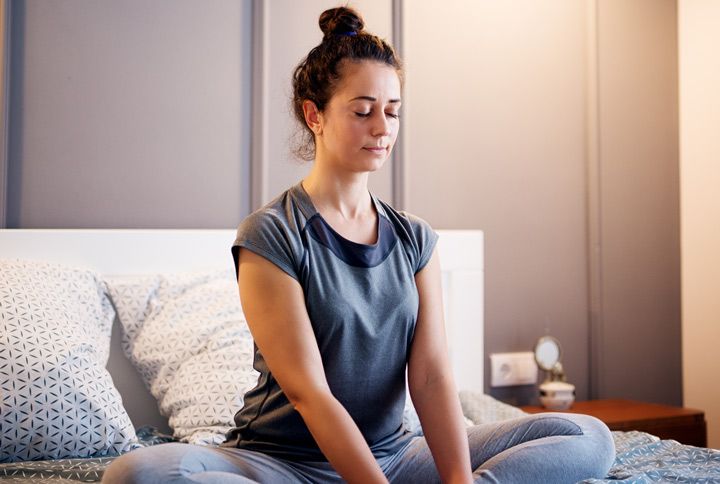
6. Sitali Pranayama
This Pranayama is a great cooling exercise for those who suffer from excess heat in the body. Apart from cooling the mind, practising Sitali Pranayama is great for patients with blood pressure issues. Sit in a position you are comfortable in. Once seated, try and create a tunnel-like shape with your tongue, while slightly sticking it out. Then take a deep breath in and observe the cool feeling of the breath as it travels along the tongue, down the throat and into the lungs. When you’re ready to breathe out, close your mouth, relax your tongue and exhale through the nostrils slowly.

7. Lion’s Breath/Simhasana
Simhasana is an excellent Pranayama that helps to alleviate stress, remove toxins while engaging the face, throat and chest muscles during the exercise. Sit in a lion’s pose—folded legs, a slightly arched back with hands resting in front of your knees. Once you are seated in the right posture, take a deep breath in. When you are ready to exhale, contract the front throat muscles, stick your tongue out completely, almost down to your chin and try to release that breath with a distinct ‘HA’ sound. Just like how a lion would.
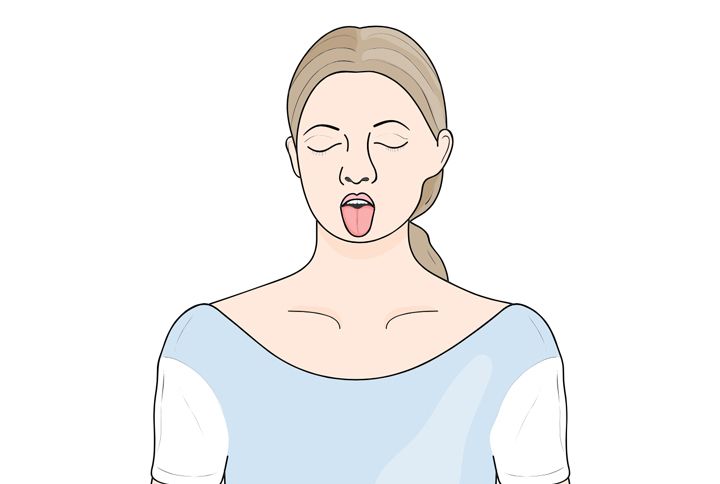
No amount of “I don’t have the time” or just about any excuse will do you good if you don’t take a few minutes out of your day for yourself to practice these. It will enrich your oxygen levels, blood flow, respiratory system as a whole and innumerable benefits. So there isn’t much of a reason why you shouldn’t practice any of these techniques!
On that note, we hope you enjoyed learning about these techniques and will incorporate them into your lives!
For more such topics, don’t forget to follow @missmalinilifestyle!

